Hähle, Johannes
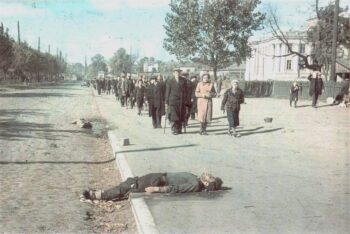
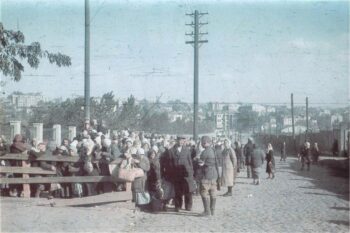
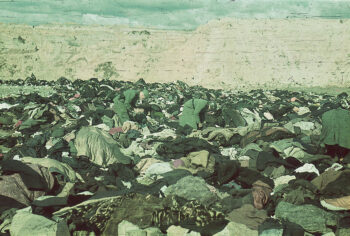
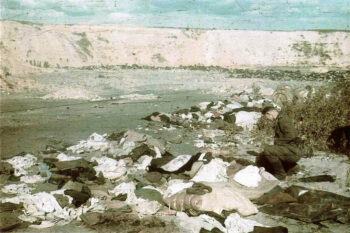
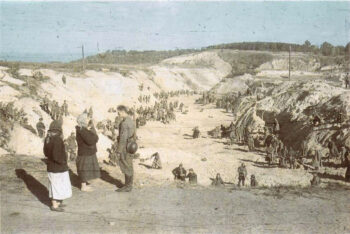
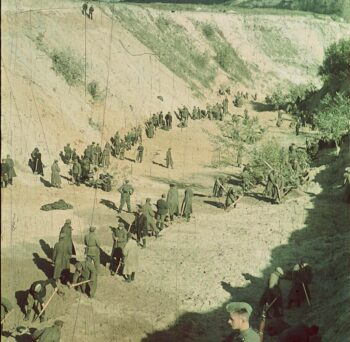 Various photographs presumably taken by Johannes Hähle at Kiev between 29 September and 1 October 1941.
Various photographs presumably taken by Johannes Hähle at Kiev between 29 September and 1 October 1941.Johannes Hähle is said to have been a German military photographer with the 637th Propaganda Company of the German Sixth Army. Between 29 September and 1 October 1941, a series of photographs were taken in Kiev, which are attributed to Hähle.
The photos of interest in the current context can be divided into two groups. One group of photos shows from several dozen up to a few hundred persons gathered at or walking along city roads. The other group shows various aspects of a ravine, with one set showing several dozen men doing some earthwork with shovels mostly at the ravine’s bottom, while the other set shows a large collection of items placed at the bottom of the ravine. The items evidently consist mostly of clothes, bedding and bags.
The orthodoxy claims that the first group of photos shows Jews on the way to their execution, while the second group shows the Babi Yar ravine near Kiev, where 33,771 Jews are said to have been executed on 29 and 30 September 1941.
The orthodox narrative of Babi Yar asserts that the Jews had to leave their belongings, including their clothes, before approaching the ravine. They were then either shot while standing at the ravine’s edge, then falling into it, or they had to climb down to the bottom of the ravine and were shot there. Either way, they presumably all ended up naked and dead at the ravine’s bottom, where they were then allegedly covered with soil.
Hähle’s photos refute that narrative. First, none of his photos show an assembly of people coming anywhere close to 33,771 people. Next, while it is unknown who the owners of the items were that had been placed at the bottom of the ravine, it is clear that these items cover the bottom of the ravine. Hence, the owners did not leave these items outside it. It is, of course, conceivable that the owners of the items left them in one part of the ravine and were shot in another part.
However, the photos showing ongoing earthworks in a ravine have no signs of any corpses being covered. The bottom of the ravine is flat and largely undisturbed. Hence, it does not consist of huge mass graves that had just been covered. Therefore, this work is evidently unrelated to mass executions. This is supported by the fact that there are very few German soldiers visible, and in one of the photos, one soldier is casually talking to two evidently local women.
None of this harmonizes with the assumption that this is the crime scene of the mass execution of 33,771 local Jews.
(For more details, see Mattogno 2022c, pp. 574-578, 783f., 788-792.)

You need to be a registered user, logged into your account, and your comment must comply with our Acceptable Use Policy, for your comment to get published. (Click here to log in or register.)